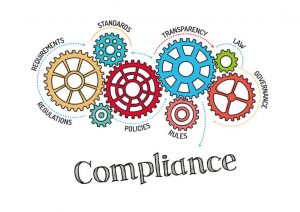
Compliance News March 2018
This year is off to a great start for Team CorpStrat! Our newest division CorpStart HR is growing by leaps and bounds. We work diligently to create 21st Century HR for our clients and hope this monthly newsletter helps you keep current with the ever-changing HR compliance laws and HR best practices so that you can be a “best place to work.”
We have a LOT of important compliance issues to cover. Workplace injuries, Department of Industrial Relations required notifications, ACA compliance and much more. Hope you didn’t forget to post your OSHA 300A Summary Form. If so, you still have time to get compliant. Visit https://www.osha.gov/recordkeeping, print, complete, and post.
If 2018 is the year you’d like to get your HR house in order, it’s not too late to give us a call. Just send us a note if you’d like to have a conversation. We’d be happy to partner with you and help you stay compliant. In the meantime, Like us on Facebook and join our newsletter for all things HR.
Are you prepared to navigate workplace injuries?
You get that call that an employee has injured themselves and you go straight into 911 mode. Workers Compensation, medical leave, ADA compliance and not to mention safety protocols flood your mind. While no situation is the same, there are a number of things you can do to make life easier.
- Know and understand the leave of absences you are required to provide and how they interact with workers compensation.
- Notify OSHA when required. For deaths, OSHA must be notified within 8 hours, hospitalizations, 24 hours. Failure to know and understand the rules and regulations leads to inspections and heavy fines.
- Planned Medical Care. Have a concrete workers compensation program that outlines issues like, handling transportation of the employee, healthcare facility, notification of the injury, etc.
- Investigate the injury. Have solid tools for investigating an incident thoroughly, as you will need to forward any and all information to the carrier and potential legal counsel.
- American Disability Act. If an employee is able to return to work with modified restrictions this would likely fall under ADA regulations. At this point, you would need to provide a reasonable accommodation. Failure to do so could result in EEOC charges, ADA lawsuits, or even retaliation claims.
- Review and update your policies often. Proactive measures save time and money in the long run.
Federal Immigration Notification
As mentioned last month, Immigration Enforcement has been updated regarding I-9 inspections of records. Under AB450, the Department of Industrial Relations has released the attached notice that complies with the new law’s notice requirements. If an employer’s I-9 forms are going to be inspected, the following notice must be posted within 72 hours of learning of the inspection. Because the timeframe is so short, it is recommended employers have an established process to respond to Notice of Inspections and avoid penalties up to $10,000 per violation.
2018 I-9 Inspection Notice Notification
Benefits: Complying with ACA Affordability Test
With the reduction for employers in affordability levels in company-sponsored plans from 9.69% to 9.56%, employers should ensure they are providing health coverage that will not cost the employee more than 9.56% of an employee’s salary. As increases in premium occur, this can put some of your employees into an unaffordable designation.
Testing?
The IRS created affordability tests to show that the employer has provided coverage that is considered “affordable” and therefore should not be subject to any fines if an employee manages to get coverage on an exchange and receive a premium tax credit to do so.
These tests set out in the final shared responsibility regulations, provide that employer coverage will be considered affordable for purposes of the employer shared responsibility assessment if the required employee contribution for the lowest-cost option offered does not exceed 9.56% of one of the following:
- W-2 – The employee’s wages for the calendar year reported on the Form W-2.
- The rate of pay – The amount obtained by multiplying 130 hours by the lower of the employee’s hourly rate of pay as of the first day of the coverage period or lowest rate of pay during the calendar month.
- Federal poverty line – An amount equal to the federal poverty line for a single individual, divided by 12. Under the FPL safe harbor, employers use the FPL in effect six months prior to the beginning of the plan year to allow time to establish premium amounts in advance of the plan’s open enrollment period.
The affordability test reduction affects employers who use the W-2 and the rate-of-pay tests. In both cases, you may need to reduce the employee contribution rate for single coverage in your lowest-cost plan.
Top 5 Mistakes that cost employers BIG BUCKS
Daily we see employers pay hefty fines to government agencies for payroll violations that are completely avoidable. Knowing and understanding how these 5 payroll liabilities affect you legally will save you tens of thousands of dollars.
1 – Garnishments and Child Support – Employers are responsible for knowing the proper ways to record wage garnishments/child support, federal and state new hire requirements, responding to wage orders, and forwarding the information to the employee.
2 – Sick Pay Classification – As a reminder, California has sick pay requirements that must be reflective on an employee’s paystubs. If you offer PTO, it must be reflective on the paystub to meet the new requirement.
3 – Employee verse 1099 Contractor – Generally the burden is on the employer to prove the classification of any individual was correct. Using the IRS Independent Contractor test and having a concrete Independent Contractors Agreement that addresses, invoicing, use of time, terms/cancelation notice, the scope of service, ownership of property, proof of insurance, etc. will help you build safeguards and protections in case of an audit.
4 – Exempt verse Non-exempt – One of the chief differences between exempt and non-exempt employees is in how the employee is paid. Exempt employees do not qualify for overtime. To qualify for an exemption under the FLSA, employees generally must meet certain tests regarding their job duties and be paid on a salary basis no less than $455 per week. Job titles do not determine exempt status. In order for the exemption to apply, an employee’s specific job duties and salary must meet all the requirements.
5 – Overtime Rules – Many employers get tripped up unintentionally by confusing pay period hours with work week hours. Overtime for non-exempt hourly employees must be calculated based on a specific 7 day period of time regardless of how frequently the employees are paid. Employers that pay piecemeal must ensure they are meeting minimum wage requirements as well when factoring overtime in addition to other factors.
We succeed because our clients succeed and are always here to help.








